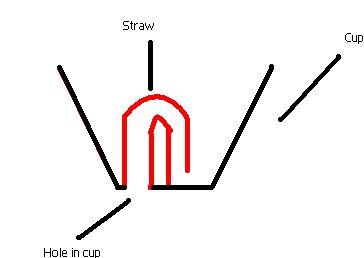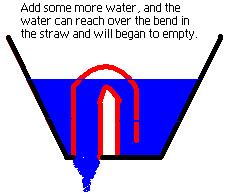Junkyard Challenge 2010
| Junkyard Challenge 2010 | ||||||
|---|---|---|---|---|---|---|
| Type | Engineering | |||||
| Category | Build | |||||
| Event Information | ||||||
| Latest Appearance | 2010 | |||||
| Forum Threads | ||||||
| ||||||
This page is about the Junkyard Challenge event run in 2010. To learn about other years or to find out more about the general competition, go to the main Junkyard Challenge page.
General Designs
The first thing to do when designing your contraption is to decide how to set off your mousetraps.
Direct Triggering
In this design, each mousetrap directly sets off the next, such as tying a string from the bar of one mousetrap to the trigger of the next. Once one mousetrap goes off, the rest go off in a fairly short amount of time. Sometimes it can be hard to distinguish one trap tripping from another, so they all appear to go off at once.
| Pros | Cons |
|---|---|
| Very easy timing to achieve maximum time | Can be difficult to design a fail-safe |
| You only need to focus on setting off one mousetrap | No bonus points for mousetraps going off in correct order |
Indirect Triggering
In this design, each mousetrap starts a series of events to set off the next, such as a mousetrap releasing a ball to roll down a ramp to the next mousetrap. This is a fairly popular design technique, but if one mousetraps fails it can be hard to get your contraption working again mid-competition.
| Pros | Cons |
|---|---|
| Easy timing to achieve maximum time | Hard to get going mid-competition if mousetrap fails |
| Easy to earn bonus points for setting mousetraps off in correct order | If you aren't careful, you might accidentally set off from a "direct touch" |
Independent Triggering
In this design, each mousetrap has nothing to do with the next mousetrap, such as each ball rolling down a separate ramp. If one mousetrap doesn't go off, the next will.
| Pros | Cons |
|---|---|
| If one mousetrap doesn't go off, the next will | More difficult to achieve maximum time |
| More stable and reliable | Harder to separate the mousetraps' setting off |
How to get the Most Points
| Points | Reason |
|---|---|
| 33 | Staying within box dimensions |
| 22 | Having all supplies and mousetraps labeled |
| 100 | Setup within 30 minutes |
| 17 | Mousetraps being 90 degrees apart |
| 58 | Successful start |
| 60 | Successful completion |
| 2 | Each whole second |
| 42 | Contraption runs at least 5 sec. before first mousetrap tripped |
| 35 | Each mousetrap tripped by device |
| 25 | North trap tripped first |
| 50 | South trap tripped second |
| 75 | West trap tripped third |
| 100 | East trap tripped fourth |
| Minus 18 | Device Touched |
| Minus 8 | Per Centimeter Device off of the Distance |
Lets break down how to get the most points possible:
The first two are gimmies. If you don't get those, drop out right now.
The third is also fairly easy, just pay attention while setting mousetraps.
The fourth, once again, if you don't get it, drop out of Junkyard Challenge.
The next one is more difficult than the others: if all the moustraps don't go off without direct touches then you won't get this one. In the rules it say that any mosetrap that go off "as the result of a direct touch" won' get scored. That penalty also includes not getting those points.
If you get those points, then you will also get 140 pts for all 4 mousetraps going off (35 pts per mousetrap).
As long as you have a system to delay the trigger of each mousetrap, you should get all 225 pts for the mousetraps going off in the right order. This is a lot of points, so its worth it to make a timer to get these points. What confuses most people is that they usually think "North South East West" or "North East South West", so pay attention to the order that you set them to go off. Independant triggering or indirect triggering may get you these points, but direct triggering will not (see above). Take this into account while designing your contraption.
As long as you have some form of delay, you can get the 42 points for lasting 5 secs. The 2 pts per second may not seem like much, but if you do it right, you can get 120 pts out of it, which can make the difference between first and last.
So, in general:
- Pay attention while setting up mousetrap (this can cause a LOT of penalties!)
- Make sure you set off the mousetraps in the right order (this can get a LOT of points!)
- Develope a system to delay the mousetraps (this can get a LOT more points then you may think!)
- And just use some common sense (bring mousetraps, make sure you drop the golf ball correctly, ect.)
You can find an easy-to-use JYC score sheet here. Just type in Y/N and it'll do the rest!
Timers
As mentioned above, you should really design a system to delay the mousetraps going off. Here are a few ideas:
Electric
Have a motor turn an axle that activates other devices. MOST teams at nationals were seen with a motor turning and rotating a screw with a wingnut on it. The wingnut would travel down, pressing down preset micro-switches that turn on other motors. The other motors would lower an object into the mousetrap. (note: this part is not related to the main screw area except that it is giving a sensor to activate it). This technique would be the one I would use if I was told to build one in a short amount of time.
Water
Water behaves in a pretty predicable way. You can use this to your advantage. You can start all of these "water timers" by building a simple sea-saw type item, attatch a bottle of water to one end and drop the golf ball at the other to pour the water into a cup.
Slow Drip
Simple: Cut a small hole into a cup to let the water pour out slowly. You can put another cup, attatched to say, a pulley, underneith that the water can drain into. Experiment with different size holes and drip speed to find the perfect hole size/water volume ratio.
Siphon Drain
This is a pretty nifty trick: by cutting a hole in a cup and placing a bendy straw into your cup, you can create a timer that starts only once the necassary amount of water gets placed into the cup. Look at the following models:
In this way you can do two things at once:
- Fill the cup almost all the way, then add a little water from the way mentioned above, and you can get a lot of water in return. A lot from a little.
- Let the water drain slowly, making a timing device.
Ramps
Small inclines that you can rool marbles, golf balls, ect. down can make a greate timer. Roll a marble down a long ramp with a small incline to a mousetrap. As long as you keep the same incline, this can be a very reliable way to time your contraption.
Electronics
This is a very reliable method, as long as you keep fresh batteries. Just attatch a motor to say, a piece of string, and the string will slowly get tenser.(please note 2nd place Nation winner was spotted using this) If you have multiple pieces of string, each a different length, then each string will pull the trigger on a mousetrap when it loses all of its slack. Just watch out to make sure nowhere on the circut does the voltage exceed 6 volts. String, however, is not the only way to do this. Integrated ciruits can do the same thing with much more accuracy.
Both of these pictures show how to wire the NXT and the RCX to use less then 6 volts, the maximum allowed. For the RCX, when standing straight up, you need to put aligator clips in the upper left and the bottom right. For the NXT (bad picture, I know...) you need to put the wires at the bottom right when standing straight up. They both go on the right, one at the very bottom, and one right above the first. The NXT and RCX can be good ways to controll your device, but remember that they are running on less then they are designed to, so you run the risk of them dying in the middle of a competition (NOT GOOD!).
Other Ideas
There are a couple more things you can do to set off mousetraps.
START/TRAP 1: Drop golf ball onto a switch, which starts a motor which starts a propeller spinning. A string is attatched to the propeller and the other end to the trigger of the mousetrap. For each revolution of the propeller, the string is wrapped around the propeller until it loses all slack and sets off the trap. This takes about 15 seconds.
TRAP 2: When mousetrap #2 is set off it has a string attached to its killbar. The string is wrapped around a screwdriver on an axle. When trap 1 snaps it unwraps the string, freeing the screwdriver to fall on trap #2.
TRAP 3: When trap #2 is set off, it triggers a PVC tube to fall on a line of dominos which lead to the mousetrap's trigger.
TRAP 4: The triggering of trap #3 releases a marble to roll down a ramp onto another switch. When the switch is turned on, it repeats the method of setting off trap #1.







